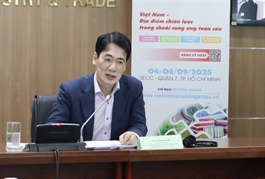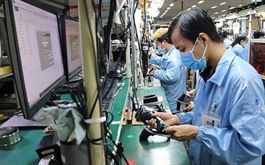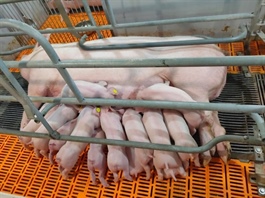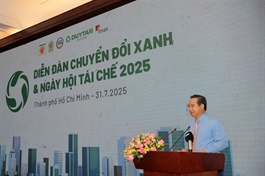Carbon market development accelerated
Carbon market development accelerated
Việt Nam has already issued regulations on greenhouse gas reduction and ozone layer protection, and most recently introduced a new decree to amend and reinforce the legal framework.
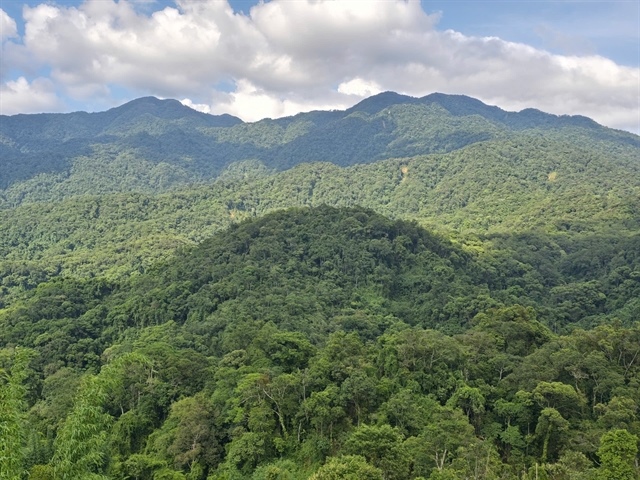
Đăk Glei forests in Quảng Ngãi Province. VNA/VNS Photos |
In a determined push to meet its international commitment of achieving net-zero greenhouse gas emissions by 2050, Việt Nam is ramping up efforts to introduce carbon pricing and formally operate a domestic carbon market.
Government ministries are currently finalising the legal and technical frameworks required to begin piloting the market by the end of this year, with official operation slated for 2029.
According to experts from the Ministry of Agriculture and Environment (MAE), the transition to a low-carbon economy will demand significant financial resources. As such, green financial instruments, particularly carbon pricing and trading, are considered essential tools for mobilising capital, reducing emissions and fostering economic opportunities for businesses, institutions and individuals.
Nguyễn Tuấn Quang, deputy director of the Department of Climate Change under the MAE, said climate change would continue to have profound impacts unless robust mitigation measures are swiftly adopted.
In 2021, the Government approved a national implementation plan, anchored by five strategic pillars.
The first pillar is energy transition, which involves increasing the share of renewable and clean energy while reducing reliance on fossil fuels. However, due to the intermittent nature of renewable sources, energy storage systems must be developed to ensure grid stability.
The second pillar centres on efficient energy use, in tandem with the development of a green and circular economy.
Third is the protection and restoration of ecosystems, particularly coastal and marine ecosystems such as mangrove forests, which can sequester three to five times more carbon than terrestrial forests.
The fourth solution is carbon capture and storage. Việt Nam could make use of depleted coal, oil and gas fields as subsurface repositories for captured carbon. While currently expensive, advances in science and technology are expected to bring down costs in the coming years.
The final pillar, and a growing area of focus, is the development of a domestic carbon market.
According to Quang, over 80 countries have adopted carbon pricing mechanisms, either through carbon taxes or emissions trading systems.
The European Union has operated a carbon market since 2005, achieving a reported 37 per cent reduction in emissions. Similar schemes are being deployed in Singapore and China.
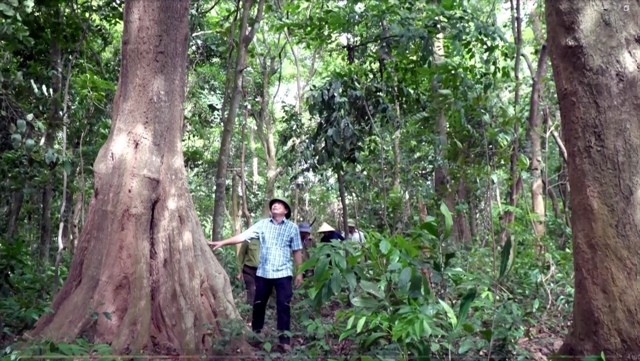
Đăk Glei forests in Quảng Ngãi Province. VNA/VNS Photos |
Legal set-up
Việt Nam formally approved the national carbon market development plan in January. Under this roadmap, the country will pilot carbon market operations through 2028, before launching the full market in 2029 and exploring international links.
Việt Nam has already issued regulations on greenhouse gas reduction and ozone layer protection, and most recently introduced a new decree to amend and reinforce the legal framework.
The Ministry of Finance has submitted a draft decree on establishing a carbon exchange platform, while the MAE is preparing legislation on international emissions trading and carbon credit transfers.
Quang warned that without strict oversight, international carbon credit trading might result in emissions reductions being counted toward the purchasing country’s targets rather than Việt Nam’s.
To avoid this, the Government aimed to complete all relevant legal and technical infrastructure by the end of this year to support the pilot programme.
According to Nguyễn Đình Thọ, deputy director of the Institute for Strategy and Policy on Agriculture and Environment, Việt Nam holds significant potential for carbon market development, citing the country’s extensive forest cover, growth in renewable energy and emission reduction opportunities in agriculture and waste management.
However, he noted several challenges for implementation. While the regulatory vision was in place, detailed guidelines were lacking, hindering execution. Inter-agency coordination remained weak, data-sharing mechanisms were underdeveloped, and Việt Nam’s measurement, reporting and verification system was still in its early stages. Emission inventories also lacked consistency and accuracy, Thọ said.
Thọ urged the Government to issue more detailed technical procedures and establish robust data integration and oversight mechanisms. He also called for a unified national carbon credit management platform with standardised data formats and transaction records to prevent discrepancies.
Regarding the carbon exchange platform, he recommended selecting a transparent model with strong government oversight.
Carbon credits are no longer just tradable commodities, but have become specialised financial instruments that represent investment in verified emissions reduction projects, according to Betty Pallard, CEO of ESG Climate Consulting. With strengths in agriculture and a technically capable workforce, she believes Việt Nam is well-positioned to become a major player in the carbon credit space.
However, Pallard also underlined the importance of branding and credibility. When introducing carbon credits to international buyers, Việt Nam must emphasise the community efforts and cultural, environmental and historical value embedded in each credit.
She said that with global demand for verifiable carbon offsets on the rise, Việt Nam would have the opportunity to not only develop its domestic market but also contribute significantly to shaping the future of sustainable finance.

Đăk Glei forests in Quảng Ngãi Province. VNA/VNS Photos |
According to Lê Quang Linh, an adviser at the carbon finance firm Giant Bard, Việt Nam has great potential to generate carbon credits by leveraging available resources. Viable solutions include producing biochar from agricultural residues, capturing biogas from pig farming for electricity generation, and incinerating waste to produce power.
For instance, biochar can reduce emissions by 10 to 12 per cent by converting waste into energy while storing carbon in soil over the long term. Việt Nam has already initiated pilot projects and national studies to explore the benefits of this technology.
Despite these opportunities, regulatory authorities have warned that if international carbon trading is not tightly monitored, domestic enterprises could face a shortfall in carbon credits, potentially undermining Việt Nam’s ability to meet its emissions reduction commitments.
- 08:29 02/08/2025



